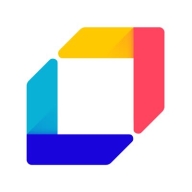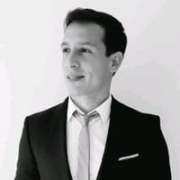

Lacework FortiCNAPP and Trivy compete in the cloud security solutions category. While Lacework has strong compliance and alerting features, Trivy's integration and open-source nature provide advantages particularly in CI/CD environments.
Features: Lacework FortiCNAPP is notable for anomaly detection, comprehensive compliance reports supporting PCI and NIST standards, and robust monitoring with actionable alerts. Trivy excels in seamless CI/CD pipeline integration, scanning diverse code configurations, and benefits from being open-source with broad functionality.
Room for Improvement: Lacework could improve by enhancing third-party integration, refining data visibility and governance, and boosting container security support. Trivy would benefit from enhanced report generation capabilities, introducing runtime dynamic scanning, and developing a more extensive vulnerability database to reduce false positives.
Ease of Deployment and Customer Service: Lacework is praised for its user-friendly public cloud deployments and responsive customer service through channels like Slack and Email, although some users note slow response times. Trivy’s flexibility spans cloud and on-prem environments, and while it relies on community support, its open-source nature facilitates easier initial integration.
Pricing and ROI: Lacework involves a significant investment with a complex licensing model, but users report substantial ROI from automated monitoring and integration features like Jira. Trivy is cost-effective as it is free, appealing to budget-conscious users, though certain platform integrations may incur additional costs.
| Product | Market Share (%) |
|---|---|
| Trivy | 6.1% |
| Lacework FortiCNAPP | 1.9% |
| Other | 92.0% |


| Company Size | Count |
|---|---|
| Small Business | 4 |
| Midsize Enterprise | 4 |
| Large Enterprise | 4 |
| Company Size | Count |
|---|---|
| Small Business | 3 |
| Midsize Enterprise | 1 |
| Large Enterprise | 9 |
Lacework FortiCNAPP provides robust cloud security, combining vulnerability management and multi-cloud insight with user-friendly controls, machine learning detection, and compliance support.
Lacework FortiCNAPP specializes in cloud security by merging machine learning anomaly detection with agent-based vulnerability management to offer detailed alerts and compliance reports. Its comprehensive approach allows continuous monitoring across AWS and Kubernetes, providing insights from an attacker's perspective. The platform offers automation and seamless Slack integration, facilitating collaborative and efficient cloud security management. Users value its ability to handle multi-cloud environments and scan IAC scripts, configurations, and compute nodes across AWS and GCP.
What are the key features?Organizations across sectors leverage Lacework FortiCNAPP for cloud security, focusing on compliance, security posture, and vulnerability management. It is widely used for monitoring AWS and Kubernetes environments, scanning IAC scripts, configurations, and securing compute nodes. It supports multi-cloud security posture management and log ingestion, enabling companies to maintain strong cloud infrastructures without dedicated security layers.
Trivy offers comprehensive scanning for files, images, repositories, and infrastructure. It's open-source and integrates with CI/CD for vulnerability detection and security enhancement.
Trivy scans vulnerabilities in code, Docker images, containers, and infrastructure. It integrates seamlessly into DevOps pipelines, ensuring security in dependency management and open source vulnerabilities. This tool, lightweight and open-source, provides user-friendly reports and supports continuous vulnerability database updates, fostering ease of use across operating systems. Users benefit from its scanning capabilities, covering Kubernetes, AWS credentials, and GCP service accounts, effectively identifying vulnerabilities and misconfigurations.
What are Trivy's key features?In industries like technology and finance, Trivy is used extensively to secure applications, perform compliance checks, and offer security metrics visualization. It addresses microservices, container systems, and Kubernetes clusters security requirements, supporting DevOps teams and enhancing codebase analysis precision.
We monitor all Container Security reviews to prevent fraudulent reviews and keep review quality high. We do not post reviews by company employees or direct competitors. We validate each review for authenticity via cross-reference with LinkedIn, and personal follow-up with the reviewer when necessary.